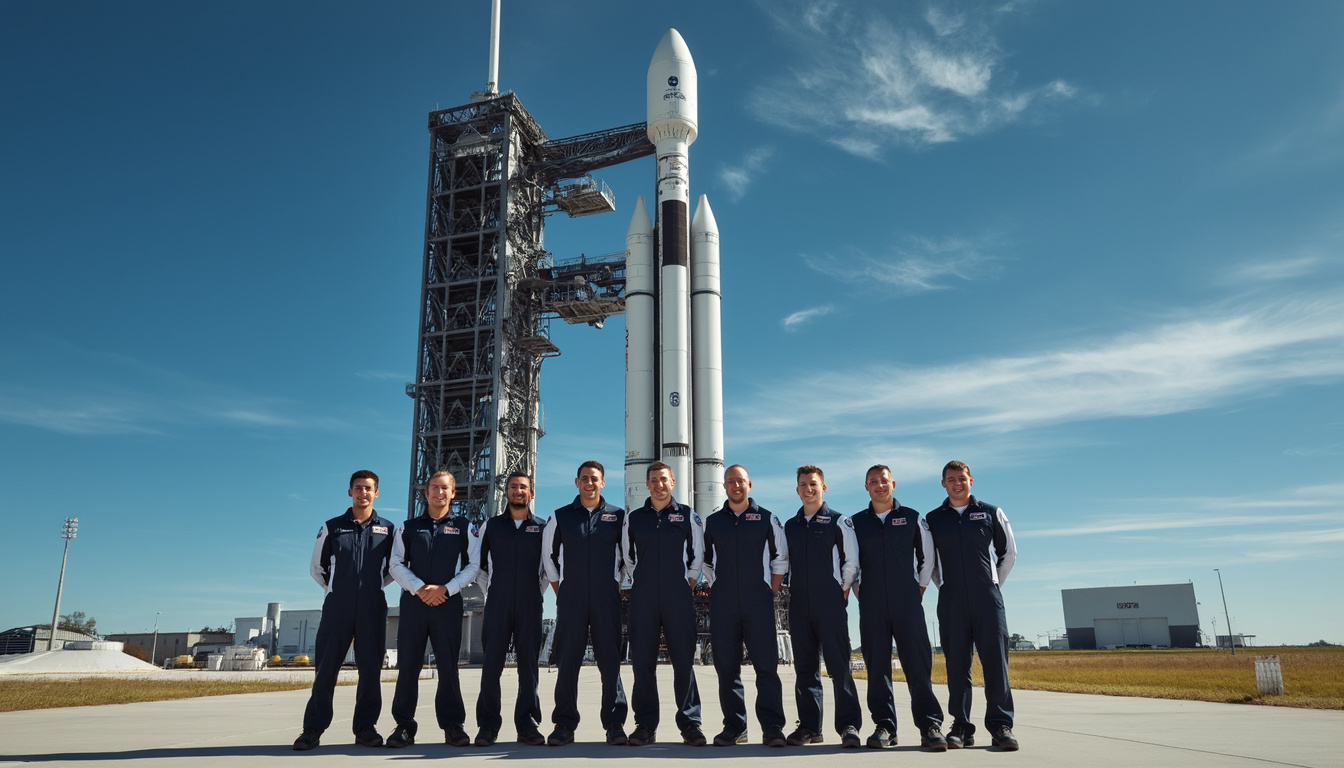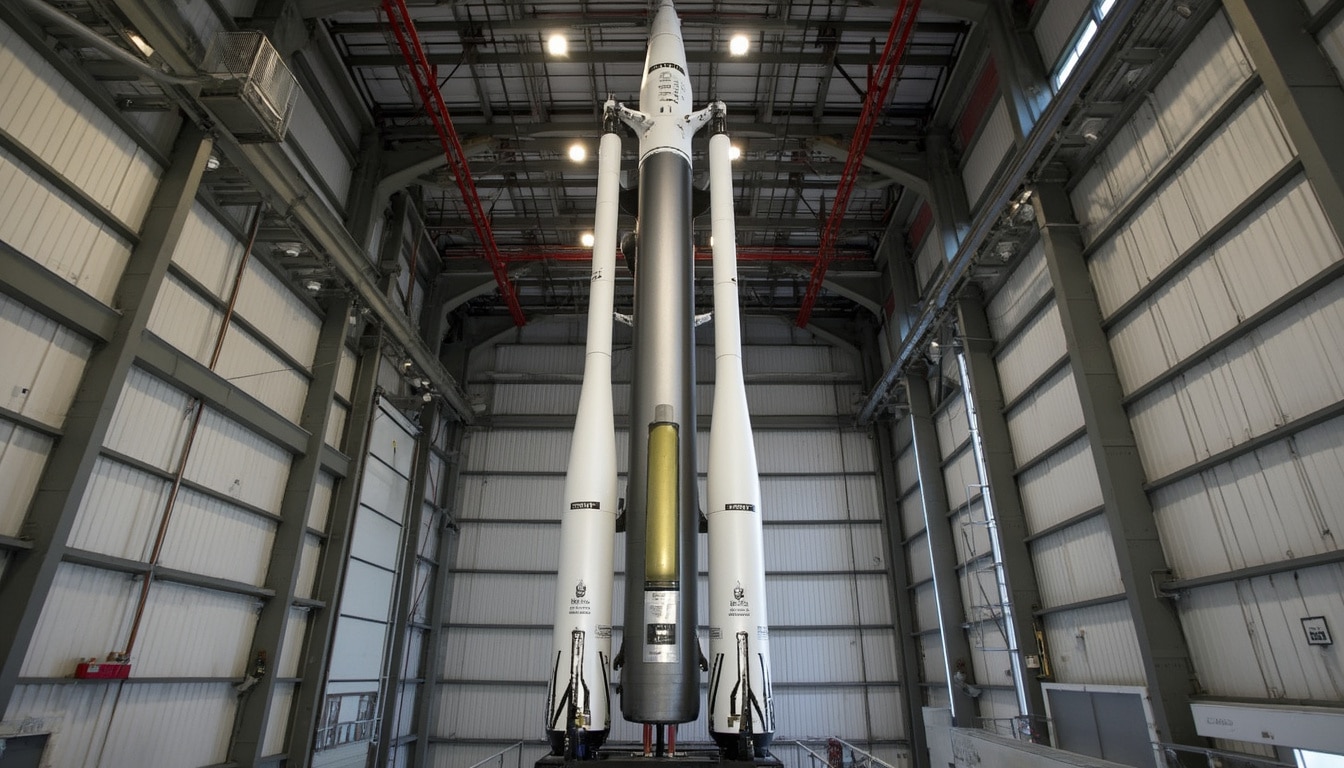A recent photograph captured the remarkable crew of SpaceX’s Crew-11, offering a stunning glimpse of life beyond our planet. This image, taken at NASA’s Kennedy Space Center, showcases astronaut camaraderie against the impressive backdrop of a Falcon 9 rocket. The four astronauts from various space agencies are gearing up for their upcoming mission to the International Space Station, which promises to contribute significantly to our understanding of space exploration. The striking visuals not only highlight the awe-inspiring technology behind modern space travel but also the unity among nations in the quest for knowledge beyond Earth.
The Crew of SpaceX’s Crew-11 Mission
SpaceX continues to redefine human spaceflight, with its Crew-11 mission being a pivotal part of this evolution. The crew comprises members from different space agencies, reflecting a global commitment to exploration. Among them are Oleg Platonov from Roscosmos, NASA’s Mike Fincke and Zena Cardman, and Kimiya Yui, an astronaut from JAXA. This unique blend of experience and expertise is instrumental in addressing the challenges posed by long-duration space missions.

Diverse Expertise Enhancing Collaboration
The astronauts bring diverse backgrounds and specialties, which are vital for the mission’s success. Oleg Platonov, with his extensive experience in spacecraft engineering, will offer insights crucial for technical operations. Meanwhile, Mike Fincke’s background includes a wealth of flight hours aboard the International Space Station, making him a seasoned veteran in microgravity research.
Zena Cardman, one of the newer faces on the team, contributes her research in astrobiology, exploring the possibilities of life beyond Earth. Kimiya Yui enhances the team’s capabilities with his expertise in life sciences and his previous missions aboard the ISS. Together, they symbolize the collaborative spirit of international space exploration.
Training for the Infinite Frontier
The preparation for this mission extends beyond physical training; it embodies a test of mental resilience and teamwork. The crew engages in rigorous simulations that replicate the conditions they will face in space, from technical malfunctions to psychological challenges of isolation. Each astronaut relies on their training and fellow crew members to navigate these demanding scenarios.
SpaceX offers an innovative approach to training with its state-of-the-art facilities. Training includes stakeouts in classrooms and simulation rooms fitted with the latest technology, allowing crew members to experience tasks in a realistic environment. This preparation plays a critical role in their ability to function effectively once launched into space.
The Falcon 9 Rocket: A Marvel of Engineering
The photograph also features the Falcon 9 rocket, a marvel of modern engineering, standing tall in the SpaceX Hangar X. Known for its reusability and cost-effectiveness, the Falcon 9 has transformed the landscape of space transportation. This rocket has successfully launched numerous missions and has set new precedents in reducing the costs associated with sending payloads to space.

The Reusability Revolution
One of the features that sets the Falcon 9 apart is its reusability. Traditionally, rockets were discarded after a single use, resulting in significant expenses for space missions. SpaceX pioneered the ability to land and reuse the first stage of the Falcon 9, allowing for reductions in cost and resource waste.
This approach has made space more accessible, enabling even smaller companies and organizations to participate in the exploration of the cosmos. The implications of this are profound, potentially allowing universities and research institutions to plan missions that were once financially unfeasible.
Technological Innovations Driving Space Exploration
SpaceX does not solely rely on existing technologies but invests heavily in developing new systems to enhance safety and efficiency. Innovations such as the SuperDraco engines and the advanced avionics used in Crew Dragon capsules are testaments to the company’s commitment to pushing the boundaries of what is possible in space travel.
Moreover, partnerships with established organizations like NASA, Boeing, and Blue Origin add more depth to the projects, where combining resources and ideas multiplies the potential for groundbreaking advancements. As we move deeper into the 21st century, this synergy could lead to even more innovative solutions to the challenges faced in space exploration.
Impact of Crew-11 on Future Missions
The Crew-11 mission is a critical step towards a new era in human spaceflight. As astronauts embark on their journey to the International Space Station, the implications of their research and experiences on long-duration space missions will echo for years to come. This mission will focus not only on scientific research but will also examine how humans adapt and thrive in settings far removed from Earth.
Scientific Goals and Innovations Aboard the ISS
One of the primary objectives of Crew-11 is to conduct experiments that further our understanding of the human body in microgravity. Such research is vital as we prepare for deeper space missions, including potential manned missions to Mars. The data collected will inform medical protocols and technology needed to support life on long-duration flights.
This mission also emphasizes teamwork and collaboration among various scientific teams worldwide. As astronaut researchers work with different institutions remotely, the intricate task of conducting experiments translates into opportunities for innovation in how space-related science is approached.
The Long-Term Vision: Mars and Beyond
As SpaceX pioneers efforts to establish a sustainable human presence on Mars, the Crew-11 mission serves as a vital stepping stone towards achieving that ambition. The lessons learned from hosting scientists aboard the ISS will guide future expeditions and form the foundations of interplanetary travel. Lessons regarding resource management, human psychology, and physiological changes in space will make significant advances as humanity prepares to set foot on new worlds.
Through each mission carried out by seasoned astronauts aboard the ISS, we get closer to understanding what it means to live and work in space and the possibilities that lie beyond our blue planet.
A Glimpse into the Universe Beyond Earth
The Crew-11 astronauts’ experiences will not only enrich our scientific understanding but also inspire future generations to reach for the stars. As these brave individuals venture into parts unknown, their adventures remind us of the boundless opportunities awaiting in the cosmos. With the technological advancements made by private companies like SpaceX, Boeing, and Virgin Galactic, our modern age witnesses the dawn of a new era in space exploration.
Inspiration from the Astronaut Community
As space becomes more accessible, the cultural impact of astronauts broadens as well. The stories of these astronauts often ignite a spark in young minds, encouraging future generations to consider careers in STEM (Science, Technology, Engineering, and Mathematics). Schools and communities across the globe are utilizing these narratives to create programs designed to engage students in space science and exploration.
Through outreach, astronauts and space agencies strive to make space relatable, helping the public understand the significance of exploring the mysteries of the universe. Programs that involve engaging with schools, hosting public talks, and sharing experiences on social media platforms are crucial in fostering this enthusiasm.
Significance of Social Media in Space Information
Social media plays an instrumental role in disseminating information about space missions and their implications. Platforms like Twitter and Instagram allow astronauts to share real-time experiences from space, providing a window into life beyond Earth. As they post updates or stream videos from the ISS, this connectivity enables followers worldwide to engage with the mission personally.
The excitement generated around space missions through social media serves as a catalyst for public interest, leading to greater support for future endeavors in space exploration.
Table: Overview of SpaceX’s Crew-11 Mission
| Astronaut Name | Affiliation | Role | Mission Objectives |
|---|---|---|---|
| Oleg Platonov | Roscosmos | Commander | Oversee mission operations and manage crew |
| Mike Fincke | NASA | Pilot | Facilitate scientific experiments and coordination with ground control |
| Zena Cardman | NASA | Mission Specialist | Conduct astrobiology research and space habitat studies |
| Kimiya Yui | JAXA | MIS Lead | Manage life sciences experiments and crew wellbeing |
As we continue to observe the advancements in space exploration led by companies like SpaceX, we are reminded of the vast possibilities that lie ahead. The Crew-11 mission is not just about reaching the International Space Station, but about paving a path for future endeavors into the cosmos.




Leave a Reply